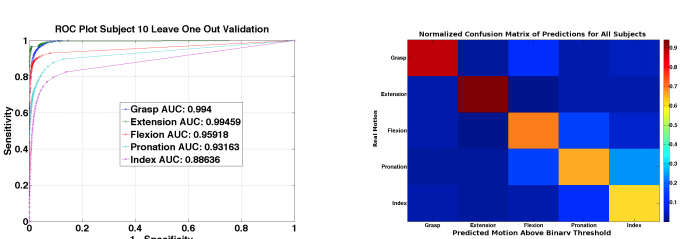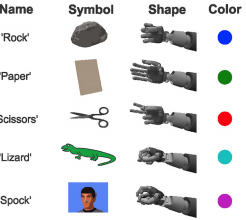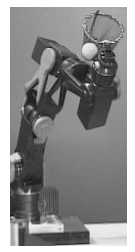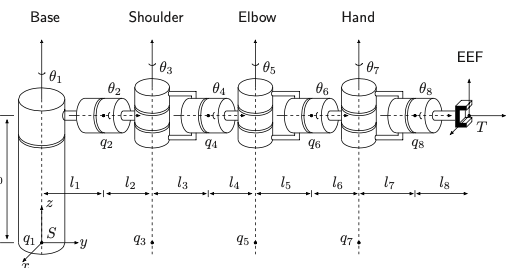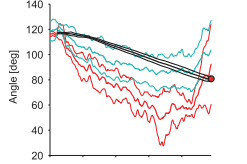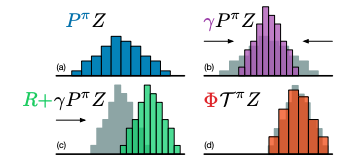Movement primitives are elementary motion units and can be combined sequentially or simultaneously to compose more complex movement sequences. A movement primitive timeseries consist of a sequence of motion phases. This progression through a set of motion phases can be modeled by Hidden Markov Models (HMMs). HMMs are stochastic processes that model time series data … Read More “JournalClub: Modeling Movement Primitives with Hidden Markov Models for Robotic and Biomedical Applications” »
This work has been conducted in the context of pattern-recognition-based control strategies for electromyographic prostheses. It focuses on the conceptual design, implementation and validation of learning techniques based on the k-nearest neighbour (kNN) scheme for gesture recognition. After theoretical considerations and the identification of the topic within the contexts of prosthetic control, biomedical signals — … Read More “JournalClub: Nearest-Neighbour-Based Learning Techniques for Proportional Myocontrol in Prosthetics” »
Presented on 10.06.2020 by Aline Xavier Fidencio
Electromyographic (EMG) processing is a vital step towards converting noisy muscle activation signals into robust features that can be decoded and applied to applications such as prosthetics, exoskeletons, and human-machine interfaces. Current state of the art processing methods involve collecting a dense set of features which are sensitive to many of the intra- and intersubject … Read More “JournalClub: Beyond User-Specificity for EMG Decoding Using Multiresolution Muscle Synergy Analysis” »
Presented on 29.04.2020 by Marie Schmidt
Humans shape their hands to grasp, manipulate objects, and to communicate. From nonhuman primate studies, we know that visual and motor properties for grasps can be derived from cells in the posterior parietal cortex (PPC). Are non-grasp-related hand shapes in humans represented similarly? Here we show for the first time how single neurons in the … Read More “JournalClub: Hand Shape Representations in the Human Posterior Parietal Cortex” »
In this paper we present a system for catching a flying ball with a robot arm using off-the-shelf components (PC based system) for visual tracking. The ball is ob- served by a large baseline stereo camera, comparing each image to a slowly adapting reference image. We track and predict the target position using an Extended … Read More “JournalClub: Off-the-Shelf Vision for a Robotic Ball Catcher” »
This report describes a mathematical framework based on screw theory to solve the kine- matics and dynamics of an arbitrary open chain manipulator. The configuration of two specific manipulators is described in this framework as an example. For one of the manipulators, a anthropomorphic 7 DoF arm, a closed form solution of the inverse kinematics … Read More “JournalClub: Mathematical Framework for Arbitrary Open Chain Manipulators” »
Objective. Brain–machine interface (BMI) technologies have succeeded in controlling robotic exoskeletons, enabling some paralyzed people to control their own arms and hands. We have developed an exoskeleton asynchronously controlled by EEG signals. In this study, to enable real-time control of the exoskeleton for paresis, we developed a hybrid system with EEG and EMG signals, and … Read More “JournalClub: A hybrid BMI-based exoskeleton for paresis: EMG control for assisting arm movements” »
In this paper we argue for the fundamental importance of the value distribution: the distribution of the random return received by a reinforcement learning agent. This is in contrast to the common approach to reinforcement learning which models the expectation of this return, or value. Although there is an established body of literature studying the … Read More “JournalClub: A Distributional Perspective on Reinforcement Learning” »

